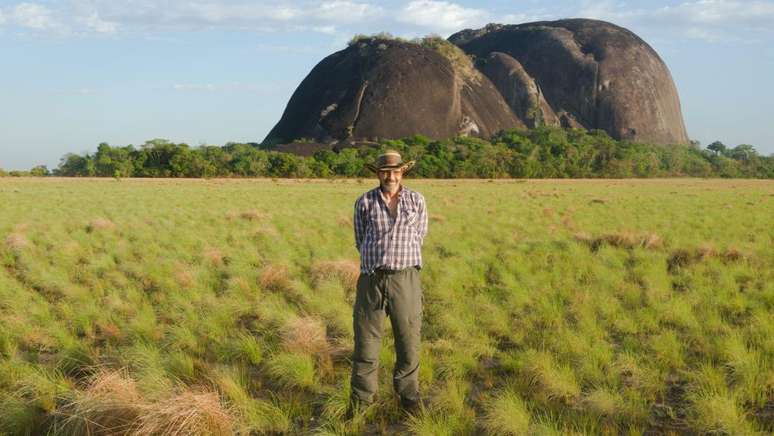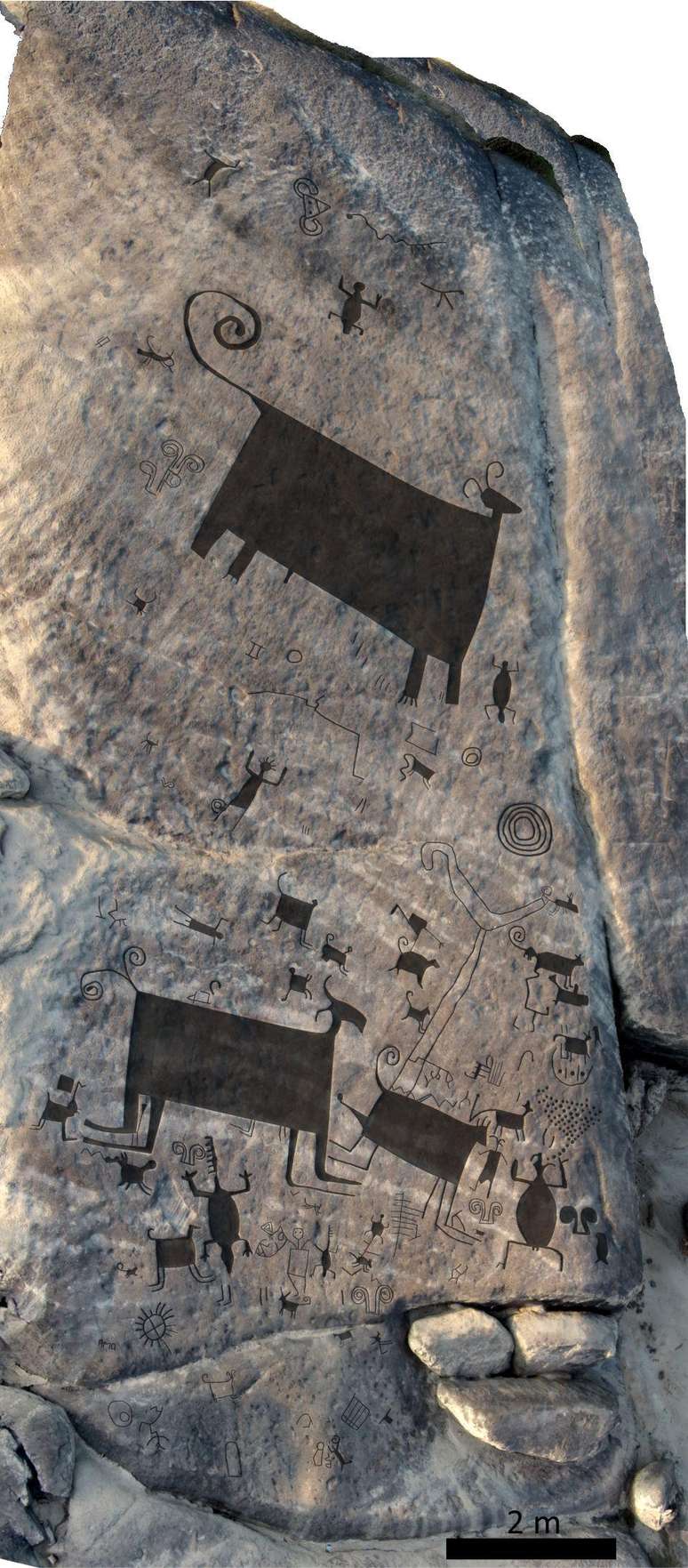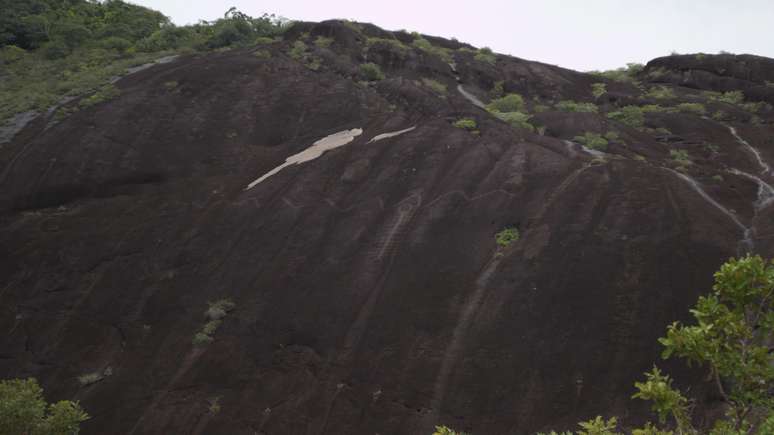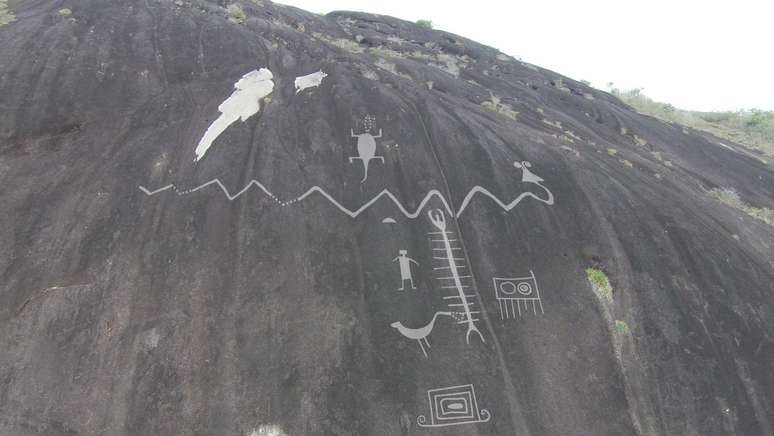A group of researchers who studied the drawings believe they were made to demarcate borders between indigenous populations.
A group of researchers from Colombia and the United Kingdom have documented the world’s largest rock art in an area near the Orinoco River, between Colombia and Venezuela.
The giant drawings made on the rock, “among the most enigmatic in the world” according to the archaeological team, show large snakes – boas and anacondas – up to 40 meters long and other animals or geometric figures.
“They are much larger than an adult human in multiple dimensions and are distributed along the Orinoco River, in a point that was once an area of intense contact and interaction between different ethnic and linguistic groups,” Philip explained to BBC Mundo Riris, Professor of Archaeological and Palaeoenvironmental Modeling at Bournemouth University, UK.
Riris studied this rock art with Colombians José Oliver and Natalia Lozada Mendieta, and the results were published in the scientific journal Antiquity on June 4.
The site is located around an area called Rápidos de Atures, on both banks of the Orinoco, on the border between Colombia and Venezuela.
The ecosystem of that Orinoco region is savanna, extensive plains, with abrupt granite rises called inselbergs or “island mountains” that, although difficult and dangerous to climb, are not impossible to reach.
“They are black, very, very black, but this is not the natural color of the rock, but a bacterial stain,” the expert said.
He added that it doesn’t take much effort to scrape off the top layer and find the rock’s natural color, which is white or very light gray, which is why centuries ago people could create the designs by carving them into the stone.
“Even though the incisions are very large, they are actually not very deep, they can be at most one or two millimeters,” Riris added.

According to Riris, the drawings on the Venezuelan side have already been extensively studied, but “very little archaeological work has been done on the Colombian side of the Orinoco.”
“This is unique on a global scale, there is nothing like it,” he said.
Pre-Columbian art
The research team believes that these drawings are pre-Columbian – that is, they were made between the years 1000 and 1500 – and that they served as a border or delimitation for the indigenous people who lived there.
The designs on the large rocks “are spaced quite regularly, occurring at similar intervals both upstream and downstream, and in particular the monumental serpent panels repeat with a relatively small number of different motifs,” Riris said.

“We believe they were recording some aspect of territoriality or social identity, or both. There is an aspect of territoriality which is: ‘This is our territory’. It should be excluded, as a warning signal,” the archaeologist said .
“But also, if you know what the snake means or if the snake or the patterns have meaning to you, then that’s a sign that you’re among friends.”
Riris explained that giant serpents appear in several indigenous myths of Northern South America and often represent creator deities.
“When the world was created and everything was water, snakes were the first to appear. As they traveled along the rivers, they also created them, metaphorically speaking,” he explained.
“Because of the shape of canoes, and because canoes also navigate rivers, snakes are sometimes metaphorically called canoes, because they are containers of people, and also because they have an association with the female reproductive aspect, because women carry a person during pregnancy,” she added.

The researcher states that, between the year 1000 and the arrival of Christopher Columbus in America, the Middle Orinoco region was populated in a way that he defines as “intense” and for this reason there are a large number of archaeological sites around it.
“Rock art like this, material that deliberately communicates identity or signals territoriality, does not arise in a vacuum. It has to be a response to something. When there is a relatively densely populated landscape, you would expect rock art like this to appear .,” he explained.
Researchers believe that more monumental rock art sites will be found along the Orinoco River and its tributaries in the future.

Source: Terra
Rose James is a Gossipify movie and series reviewer known for her in-depth analysis and unique perspective on the latest releases. With a background in film studies, she provides engaging and informative reviews, and keeps readers up to date with industry trends and emerging talents.






-uvbfyi0yeaue.png)
